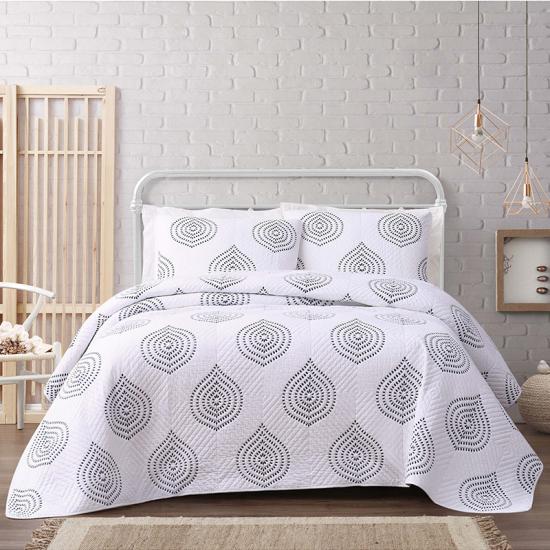Recycling and end-of-life disposal options for microfiber printed bedding present significant challenges due to the composition of microfiber fabric, which is typically made from synthetic materials such as polyester or polyamide. Here are some considerations regarding recycling and disposal:
Material Composition: Microfiber bedding is primarily composed of synthetic fibers (polyester or polyamide), which are not easily biodegradable and can persist in the environment for a long time.
Recycling Challenges: Currently, there are limited recycling options for microfiber bedding due to the complexity of separating and processing synthetic fibers. The recycling process for polyester involves melting down the fibers, which requires specialized equipment and processes not commonly available for household textiles.
End-of-Life Disposal: When microfiber bedding reaches the end of its usable life, disposal options typically involve landfilling or incineration. While incineration can generate energy, it does not address the long-term environmental impact of synthetic fibers.
Environmental Impact: Synthetic fibers can shed microplastics during washing, contributing to plastic pollution in waterways and ecosystems. Proper disposal practices are essential to minimize these environmental impacts.

Industry Initiatives: Some companies and organizations are exploring innovative solutions for recycling synthetic textiles, including microfiber bedding. However, these initiatives are still in the early stages, and widespread solutions are not yet widely available.
Consumer Awareness: Educating consumers about the environmental impact of synthetic textiles and promoting responsible disposal practices can help mitigate the impact of microfiber bedding on the environment.
While recycling options for microfiber printed bedding are currently limited, ongoing research and industry efforts aim to develop more sustainable solutions for managing synthetic textile waste. In the meantime, consumers and industry professionals should consider ways to extend the lifespan of bedding, minimize waste, and support initiatives that promote environmental responsibility in textile production and disposal.















.jpg)
.jpg)
.jpg)
.jpg)
.jpg)
.jpg)
.jpg)

.jpg)